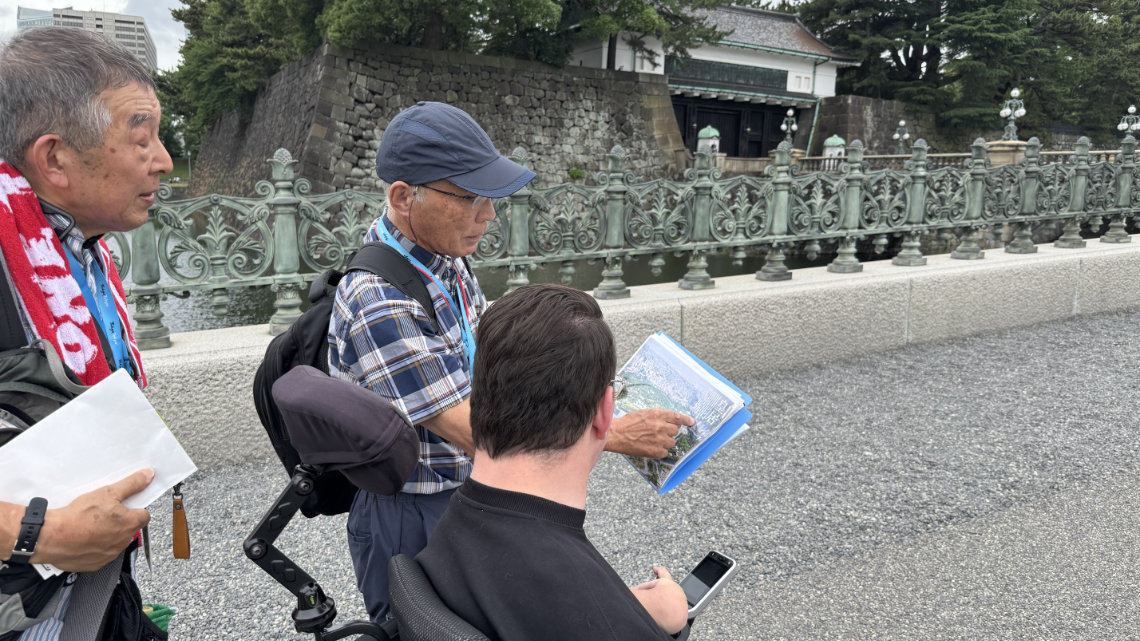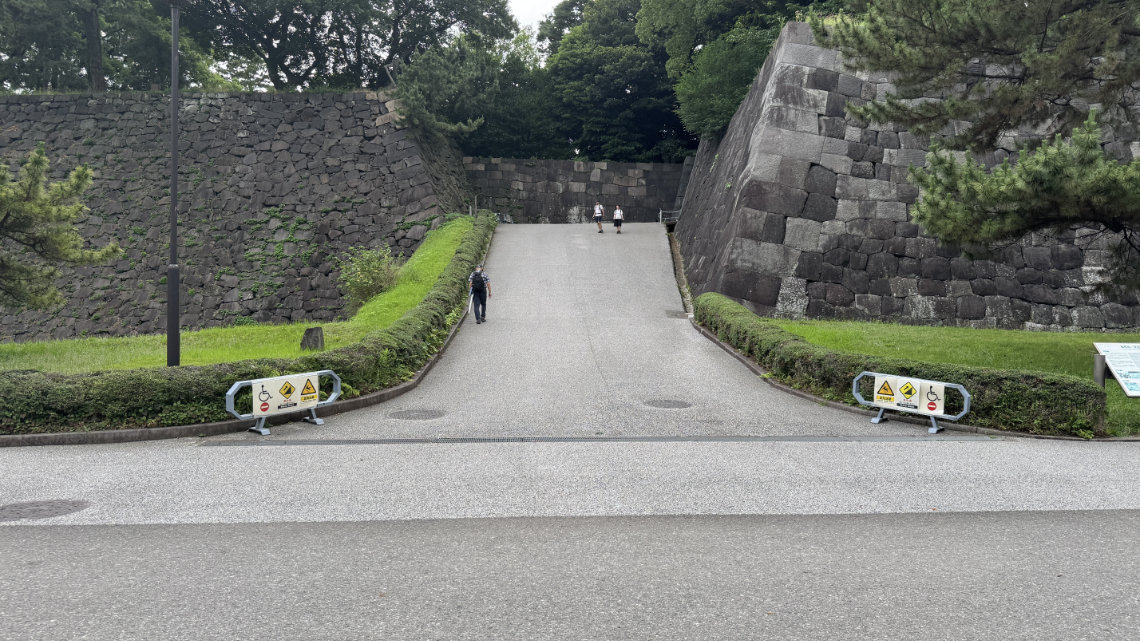I’ve lived in Tokyo for over 18 years now, and like any true local, I don’t often make time to visit the city’s big tourist attractions. They’re always there, and it’s easy to assume you’ll go again “someday.” So, when I was invited to join a test run of an accessible tour of the Imperial Palace put on by the Tokyo Volunteer Guides, I jumped at the opportunity.


It had been quite a few years since I last visited the palace grounds, and I was interested to see how the tour route had been adapted for wheelchair users. I’m always excited to see accessibility initiatives in action – especially when they combine Tokyo’s deep history and the opportunity to meet volunteers giving back to the community.
A Mini Tour in Itself
We started our day at Shinjuku Station, where I met up with the guides. Together we took the train to Tokyo Station, which was actually a valuable part of the tour itself. It gave the guides an opportunity to practice assisting a power wheelchair user on public transit – something I navigate daily but which can still be tricky for first-timers.
As we rode the train, the guides shared tidbits about Tokyo’s history and urban layout—everything from the moats around the city center to how the neighbourhood layouts reflect the city’s growth over time. I found myself learning new things even before we reached the palace.
I expected we’d head straight for the Imperial Palace after getting off the train. However, we spent time exploring the area around Tokyo Station, including the red-brick Tokyo Station building and surrounding financial district. The guides gave great historical context to how the buildings were constructed and the different areas got their names.


Arriving at the Palace
By the time we reached the Imperial Palace East Gardens, the temperature was rising, and I was glad the guides frequently pointed out shaded rest areas, suggested hydration breaks, and made sure everyone was comfortable.
Now, getting up to the upper garden area can be a challenge, depending on which route you take. The guides were well-prepared, having already scoped out the most accessible of the three available paths (maybe they read our guide? )
Even though I’ve visited before, I still learned many new facts that made me aware of how important guided tours can be!


Logistics and Accessibility Tips
If you decide to go, make sure to arrive a bit early. I had some trouble finding the exact starting point, which is tucked inside the Tokyo Tourist Information Center in the very busy Shinjuku Bus Terminal. It’s worth popping in anyway – it’s full of helpful brochures and staff who speak multiple languages.
The palace grounds themselves are quite spacious, but keep in mind:
- There are elevation changes, so route selection matters
- While most paths are paved, some areas can be a bit rough or narrow
- Accessible restrooms are available, but not always obvious, and some are better than others. Ask your guide for help locating them

Ideas for the Future
At the end of the tour, we gathered to chat and share feedback – not just about this route, but about how other accessible tour options could be developed across Tokyo. We talked about pacing, signage, group size, and how to incorporate more interactive elements for participants with different needs.
It was great to see that the program is not just trying to be accessible, but is actively listening and evolving based on real-world experience.
Final Thoughts
I had a great time, made new friends, and learned a lot. If you’re visiting Tokyo and looking for something both scenic and historically rich – and you want to support the development of accessible tourism – I highly recommend checking this tour out. The tour is paid, but reasonably priced, and it helps support both the program and the expansion of accessible options.
More information and booking details can be found here: Imperial Palace Accessible Tour – Go Tokyo.




Responses